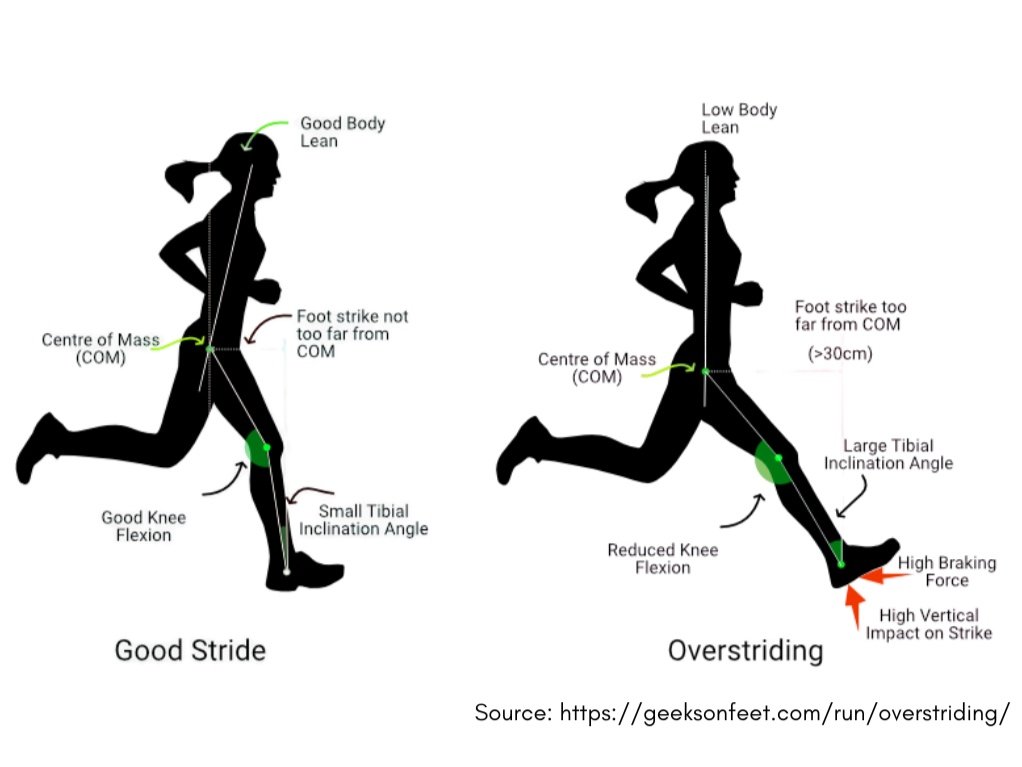When it comes to optimising your running performance and safeguarding your body against injury, it’s not just about the distance covered or the speed at which you run; it’s also about your running cadence. Cadence, referring to the number of steps taken per minute, plays a pivotal role in the efficiency of your running stride, the stress on your joints, and the overall risk of injury.
Understanding Running Cadence
Imagine your feet hitting the ground while running. Each time your foot strikes, it generates force that travels through your body, impacting various joints and muscles. Running cadence determines how frequently these impacts occur. Typically measured in steps per minute (SPM), an ideal cadence falls within the range of 170-190 steps for most runners. This number varies depending on factors like height, leg length, and running experience. Increasing your cadence involves taking shorter, quicker steps while maintaining your pace.
Efficiency Amplified
One of the primary advantages of a higher running cadence is its efficiency. With a quicker turnover of steps, each stride becomes shorter. This seemingly counterintuitive adjustment actually allows you to:
- Reduce Overstriding: Overstriding, where your foot lands too far in front of your body, can lead to braking forces, increasing the risk of injury. Higher cadence helps avoid this by promoting a more compact, centred stride.
- Enhance Running Economy: Studies have shown that an increased cadence can improve running economy, allowing you to cover the same distance using less energy. This efficiency boost becomes crucial, especially during long-distance runs.
Joint Health and Injury Prevention
Running can exert considerable stress on joints and muscles. However, a higher cadence can alleviate some of this strain:
- Reduced Impact Forces: Shorter, quicker steps distribute the impact of each foot strike more evenly throughout your body, minimizing the stress on your knees, hips, and ankles.
- Less Strain on Soft Tissues: By reducing the time your foot spends on the ground with each step, a higher cadence decreases the load on your tendons and ligaments, potentially lowering the risk of overuse injuries.

Adopting a Higher Cadence
Transitioning to a higher cadence may not happen overnight. It requires patience and gradual adjustments to your running technique:
- Incremental Changes: Start by increasing your cadence by 5-10% and allow your body to adapt gradually. This might involve shorter training runs initially to avoid overexertion.
- Focus on Form: Concentrate on maintaining good posture, relaxed shoulders, and quick turnover. Incorporating drills and interval training can help reinforce these changes.
Your running cadence isn’t just a number; it’s a critical factor influencing your running performance and overall well-being. By consciously working on improving your cadence, you can enhance your efficiency, reduce stress on your joints, and lower the risk of running-related injuries. Remember, making significant changes to your running technique should be approached gradually to allow your body to adapt and reap the benefits in the long run.
~ Jacob Spencer, Physiotherapist